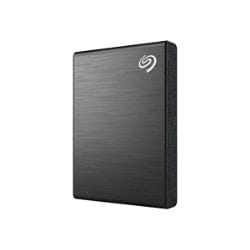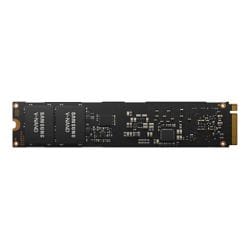September 06, 2022
What is Data Storage? Definition, Benefits & Types of Data Storage
What are the different types of data storage, and how can you choose the best solution for your business?
What is data storage going to do to improve your business operations? It's no secret that technology glitches can (and do) occur for both small businesses as well as international corporations. Protecting your users' and company's important files and historical archive of documents with storage solutions is a vital part of running a business; it will also help to ensure that your files can be recovered if a major loss does occur. Reliability, cost of the storage system and security offerings are the major considerations to keep in mind as you prepare to implement data storage, performance management and disaster recovery plans.
What is Data Storage?
Data storage essentially means that files and documents are recorded digitally and saved in a storage system for future use. Storage systems may rely on electromagnetic, optical or other media to preserve and restore the data if needed. Data storage makes it easy to back up files for safekeeping and quick recovery in the event of an unexpected computing crash or cyberattack.
Data storage can occur on physical hard drives, disk drives, USB drives or virtually in the cloud. The important thing is that your files are backed up and easily available should your systems ever crash beyond repair. Some of the most important factors to consider in terms of data storage are reliability, how robust the security features tend to be and the cost to implement and maintain the infrastructure. Browsing through different data storage solutions and applications can help you arrive at the choice that is the best fit for your business' needs.
Types of Data Storage
There are two broad types of data storage, including direct attached storage and network attached storage. There are many devices that fit into each of these categories, each with their own unique advantages and disadvantages, which we’ll explain in more detail below. For now, let’s take a closer look at each of these main categories:
Direct Attached Storage (DAS)
As the name might suggest, direct attached storage (DAS) includes types of data storage that are physically connected to your computer. This storage is generally accessible to only a single machine. Some common devices in this category include:
DAS solutions are great for creating local backups and can be more affordable than NAS solutions, but sharing data between machines can be cumbersome.
Network Attached Storage (NAS)
Network attached storage (NAS) allows for multiple machines to share storage over a network. This is accomplished with multiple hard drives or other storage devices in a RAID configuration. One of the key benefits of NAS is the ability to centralize data and improve collaboration. Data can be easily shared among connected machines, and permission levels can be set to control access. While NAS solutions tend to be more costly than DAS solutions, they are still very affordable as storage technology has advanced significantly.
Types of Data Storage Devices
Numerous data storage devices provide reliable protection of important files, but a few differences can help you find the best fit for your business. Computer memory and local storage may not be enough to keep your proprietary data protected. The best way to protect yourself is non-volatile data storage, which doesn't require continuous power to store and preserve data. Consider these non-volatile data storage options.
SSD Flash Drive Arrays
Using only flash memory, these solid-state storage systems offer swift data transfer between SSD and a smaller physical size than a disk array. The upfront cost tends to be higher, but there's great potential to pay a lower cost over time.
Hybrid Flash Arrays
These storage devices include both flash memory drives and hard disk drives for balanced performance. Hybrid flash arrays offer low-cost startup, reasonable performance costs and fast data access on demand. All-flash arrays offer lower latency and faster performance than hybrid flash but may cost even more.
Hybrid Cloud Storage
Budget-friendly and flexible, hybrid cloud storage offers a secure and compliant option that helps to assure business continuity. This type of data storage accommodates frequent backups and long-term archives as well as future scaling and always-on availability. The combination of cloud and on-premises storage adds a layer of safety to ensure data is protected and available, and storage space could potentially be unlimited.
Backup Software
Software for system and enterprise backups typically comes with a license or a subscription rate billed monthly or annually. Convenience is a big factor in being able to "set it and forget it," in many cases.
Backup Appliances
Backup servers, backup and recovery appliances and other devices for this purpose come with a hefty price tag. Configurations may be complicated and reliability may be at risk with misconfigurations and incorrect software tuning.
Cloud Storage
Complete cloud-based or online storage solutions offer virtual data storage and convenient access to your materials from anywhere, not just a local computer or external hard disk. Reliability tends to be on point, but organizations need to consider a cloud storage security strategy before implementing.
For best results in protecting your data, you should strive to maintain three copies of your important files. Store your primary data plus two backup copies, preferably with one backed up remotely and offsite.
Benefits of Efficient Data Storage
As a business leader, you may wonder, "What is data storage going to do to protect and preserve my company's proprietary information?" You may want to know how much money a data storage solution can save your business, or how quickly you can get your company back up and running after a failure with the right data storage and recovery solution in place. Consider these data storage benefits to determine how big of an impact the right solution may have on your business.
- Reliable data preservation
- Data continuity and accessibility
- Quicker and easier data recovery
- Flexible price points and capacity options
- Effective security for protected files
The Future of Data Storage
The data storage solutions highlighted above represent the current array of solutions, but the world of data storage is continuously evolving. The latest innovations in network storage can provide forward-thinking and comprehensive solutions for businesses that need to store a large volume of sensitive information. If your business has more complex data storage needs, you may want to consider one of these more advanced storage options. Let’s take a look at two of these emerging data storage technologies.
Software-Defined Storage
Traditional data storage requires hardware and proprietary software to run it. When you need to scale your storage, you'll find yourself scrambling for more hardware.
In contrast, software-defined storage (SDS) decouples the software layer between where data is physically stored and how it's retrieved. Separating storage software from its hardware allows you to expand your storage capacity on any industry standard server or x86 system — so you don't have to keep buying proprietary hardware every time you need more storage and you don't have to use storage devices from the same vendor.
By abstracting the software layer, you can put your data wherever you need it, with the flexibility to expand capacity as you see fit, or descale if needed. SDS offers additional benefits like automated management, cost efficiency, and the ability to join many different data sources to build a storage infrastructure.
Storage Virtualization
Storage virtualization refers to the storage capacity that is accumulated from multiple physical devices and then made available for reallocation in a virtualized environment. It is the pooling of physical storage from multiple devices into what appears to be a single storage device managed from a central console. Relying on software to identify available storage capacity, the technology then aggregates that capacity as a pool of storage that can be used in a virtual environment by virtual machines.
Unlike SDS, which separates the software layer from the hardware to build a storage infrastructure, storage virtualization simply pools storage resources so that it appears to users like a single, standard read or write to a physical drive. It hides the complexity of the storage system, which allows users and administrators to perform tasks such as backup, archiving and recovery in an easier, less time-consuming manner. Storage virtualization can also help you increase storage capacity without the need to buy new storage devices.
Hyperconverged Storage
Hyperconverged storage (HCS) is the next step up from storage virtualization and SDS. HCS utilizes the cloud to combine the functions of computing, virtualization and storage as a physical unit that can be managed as a single system.
This is a type of software-defined storage because each node has a software layer running virtualization software identical to all other nodes in the cluster. This software virtualizes the resources in the individual node and shares them with the other nodes, allowing storage and other resources to be used as a single storage or compute pool.
HCS Benefits
- Virtualization. This virtualization aspect is an advantage of hyperconverged storage, because it makes it possible to use commercial off-the-shelf hardware to make up the individual nodes. This means a hyperconverged device can be cheaper to build if you do it yourself or can result in a less expensive monthly or annual cost if you use a vendor.
- User Experience. To users, virtual storage appears like a standard read or write to a physical drive. It hides the complexity of the storage system, which allows users and administrators to perform tasks such as backup, archiving and recovery in an easier, less time-consuming manner.
- Increased Storage Capacity. Storage virtualization can also help you increase storage capacity without the need to buy new storage devices.
- Improved Efficiency. The combining of the storage functions into a single entity makes the transfer of data fast and efficient. In the past, to transfer data stored on one device to another, you would need to download data from one point to another and then bring the endpoint device online. With virtual disk storage techniques like storage visualization and HCS, you can specify the logical unit number of the drive and specify that data should now to go a new drive.
Other Emerging Data Storage Trends
The future of data storage seems to be heading away from traditional tiered units in favor of combined services that give organizations more control over their data and eliminate the need for a large IT staff, as many functions can be handled remotely.
- Cloud storage that is accessible from different devices for users is another growing segment that shows promise to become even faster and more efficient.
- Flash storage and flash storage chips within SSD drives are being developed as a storage option on which you can rely.
- Artificial Intelligence (AI) is also becoming more prevalent in newer types of data storage to handle repetitious tasks, such as managing backup schedules and setting custom recovery points for specific data sets.
Are You Using the Right Data Storage Solutions for Your Business?
The act of preserving important information and files is vital to ensure continuity and reliability of your data center and network infrastructure during day-to-day business operations. Like insurance, the hope is that your business won't need to use disaster recovery for your data. Worse yet, you don't want to end up in a situation where data loss is imminent without a disaster recovery plan in place.
A data storage expert can help you browse through the different types of data storage and devise a plan to ensure your data is always protected, preserved and ready for restoration without interrupting your business operations.





